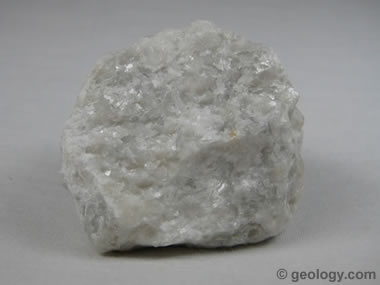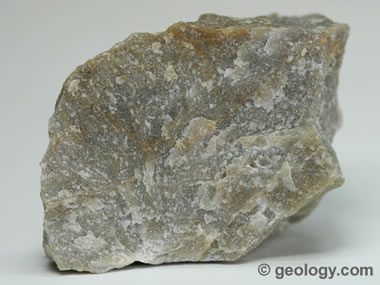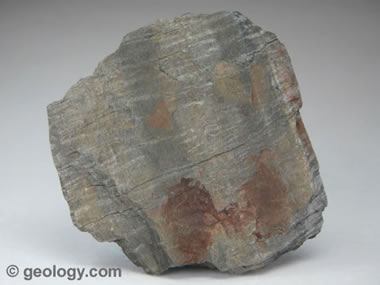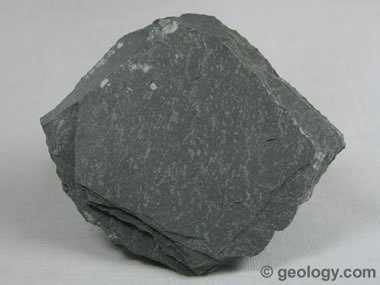Home » Rocks » Metamorphic Rocks
Pictures of Metamorphic Rocks
Photos of Common Foliated and Non-Foliated Metamorphic Rock Types
Article by: Hobart M. King, PhD, RPG
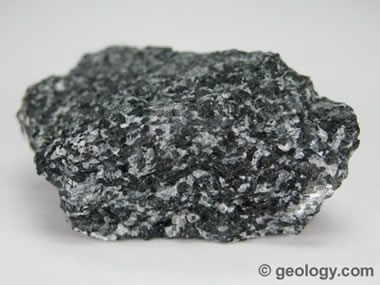
Amphibolite is a non-foliated metamorphic rock that forms through recrystallization under conditions of high viscosity and directed pressure. It is composed primarily of hornblende (amphibole) and plagioclase, usually with very little quartz. The specimen shown above is about two inches (five centimeters) across.
What are Metamorphic Rocks?
Metamorphic rocks have been modified by heat, pressure, and chemical processes, usually while buried deep below Earth's surface. Exposure to these extreme conditions has altered the mineralogy, texture, and chemical composition of the rocks.
There are two basic types of metamorphic rocks. Foliated metamorphic rocks have a layered or banded appearance that is produced by exposure to heat and directed pressure. Examples of foliated rocks include: gneiss, phyllite, schist, and slate
Non-foliated metamorphic rocks do not have a layered or banded appearance. Examples of nonfoliated rocks include: hornfels, marble, novaculite, quartzite, and skarn.
Photographs and brief descriptions of some common types of metamorphic rocks are shown on this page.
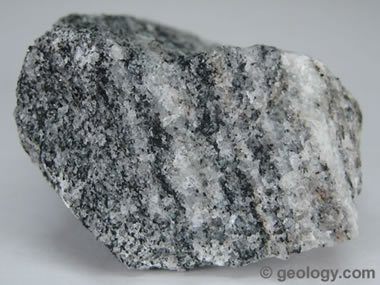
Gneiss is a foliated metamorphic rock that has a banded appearance and is made up of granular mineral grains. It typically contains abundant quartz or feldspar minerals. The specimen shown above is about two inches (five centimeters) across.
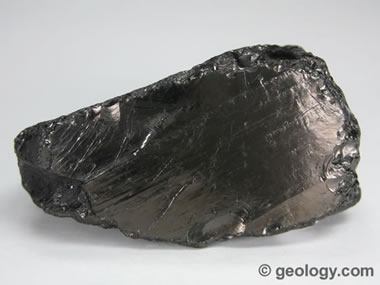
Anthracite is the highest rank of coal. It has been exposed to enough heat and pressure that most of the oxygen and hydrogen have been driven off, leaving a high-carbon material behind. It has a bright, lustrous appearance and breaks with a semi-conchoidal fracture. It is often referred to as "hard coal"; however, this is a layman's term and has little to do with the hardness of the rock. The specimen shown above is about two inches (five centimeters) across.
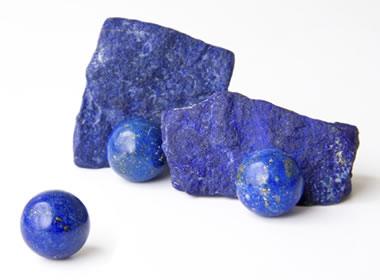
Lapis Lazuli, the famous blue gem material, is actually a metamorphic rock. Most people are surprised to learn that, so we added it to this photo collection as a surprise. Blue rocks are rare, and we bet that it captured your eye. The round objects in the photo are lapis lazuli beads about 9/16 inch (14 millimeters) in diameter. Image copyright iStockPhoto / RobertKacpura.
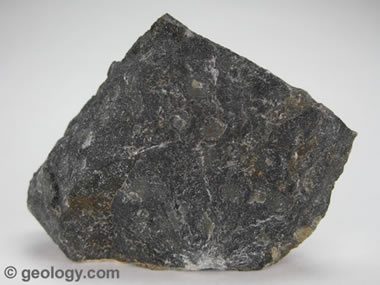
Hornfels is a fine-grained nonfoliated metamorphic rock with no specific composition. It is produced by contact metamorphism. Hornfels is a rock that was "baked" while near a heat source such as a magma chamber, sill, or dike. The specimen shown above is about two inches (five centimeters) across.
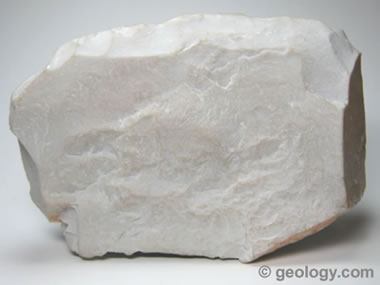
Novaculite is a dense, hard, fine-grained, siliceous rock that breaks with a conchoidal fracture. It forms from sediments deposited in marine environments where organisms such as diatoms (single-celled algae that secrete a hard shell composed of silicon dioxide) are abundant in the water. The specimen shown above is about three inches across.
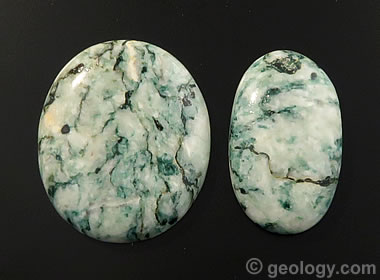
Mariposite is a word that has been used in many ways. It can refer to green mica minerals, or metamorphic rocks that contain enough green mica to impart a green color. Gold prospectors learned that gold could be found in areas where these green rocks were present. This is because mariposite is an ore of gold.
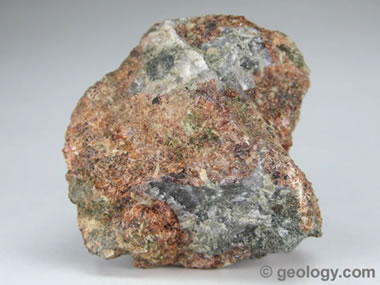
Skarn is a rock characterized by its formation rather than its mineral composition. It often forms when carbonate rocks near a magma body are altered by contact metamorphism and metasomatism. Various minerals, gems, and even precious metals can sometimes be found in skarn.
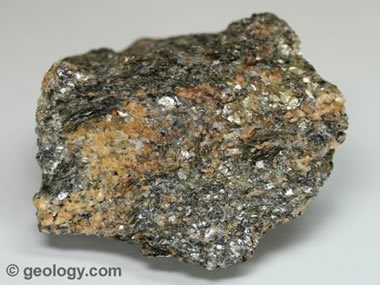
Schist is a metamorphic rock with well-developed foliation. It often contains significant amounts of mica which allow the rock to split into thin pieces. It is a rock of intermediate metamorphic grade between phyllite and gneiss. The specimen shown above is a "chlorite schist" because it contains a significant amount of chlorite. It is about two inches (five centimeters) across.
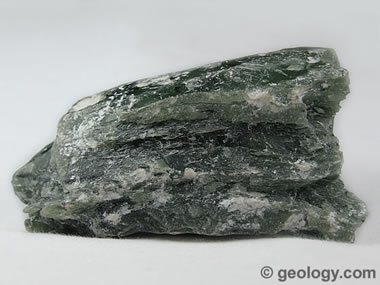
Soapstone is a metamorphic rock that consists primarily of talc with varying amounts of other minerals such as micas, chlorite, amphiboles, pyroxenes, and carbonates. It is a soft, dense, heat-resistant rock that has a high specific heat capacity. These properties make it useful for a wide variety of architectural, practical, and artistic uses.
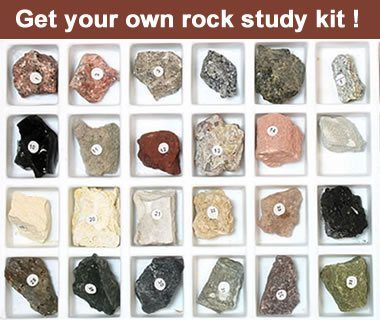
The best way to learn about rocks is to have a collection of specimens to examine while you study. Seeing and handling the rocks will help you understand their composition and texture much better than reading about them on a website or in a book. The Geology.com store offers inexpensive rock collections that can be mailed anywhere in the United States or U.S. Territories. Mineral collections and instructive books are also available.
| More Rocks |
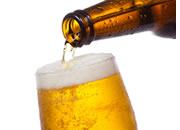 |
The Rock Used to Make Beer |
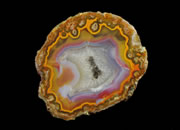 |
Geodes |
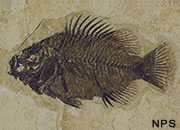 |
Fossils |
 |
Topo Maps |
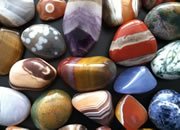 |
Tumbled Stones |
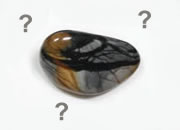 |
Difficult Rocks |
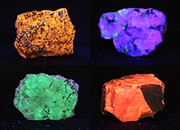 |
Fluorescent Minerals |
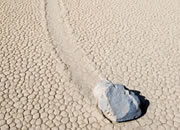 |
Sliding Rocks on Racetrack Playa |

Find Other Topics on Geology.com:
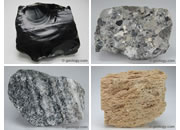
|
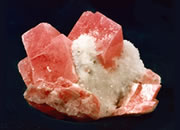
| ||
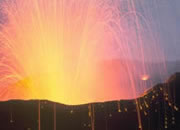
|
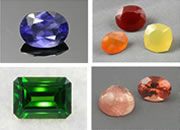
| ||
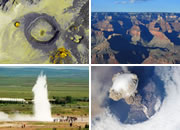
|
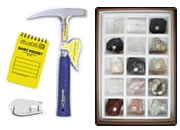
| ||
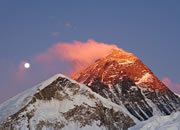
|
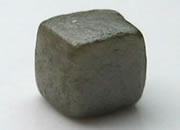
|

